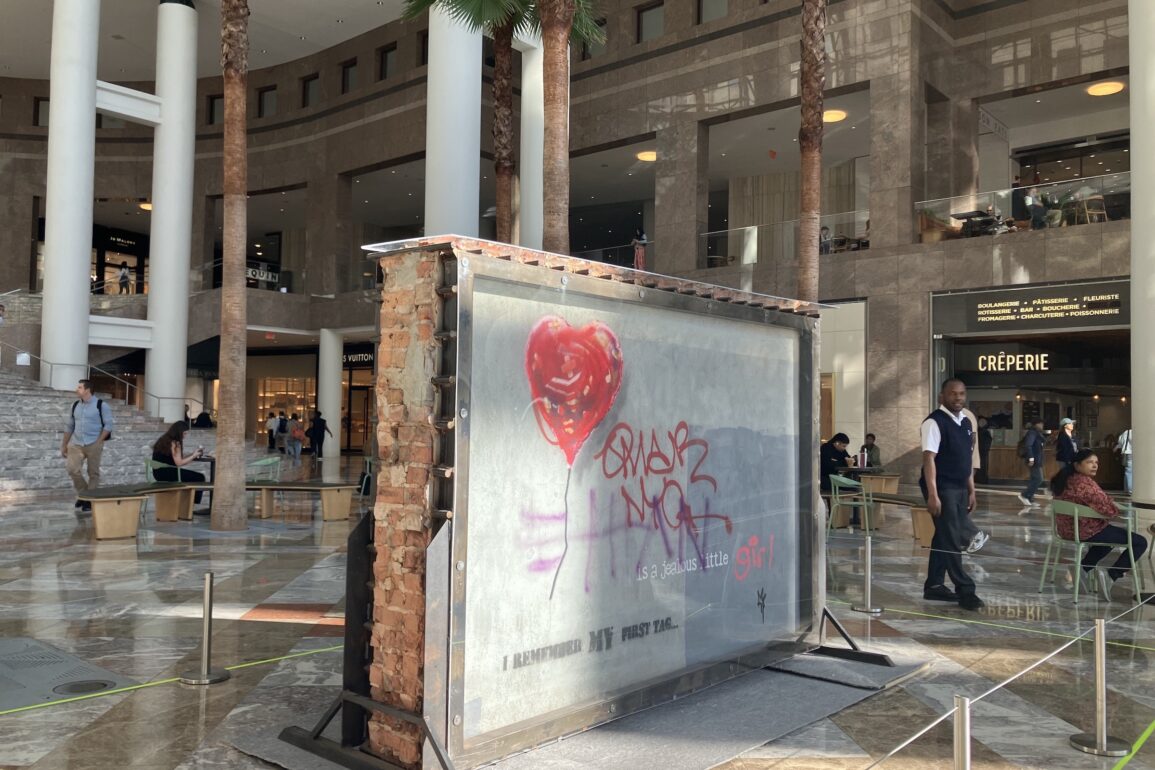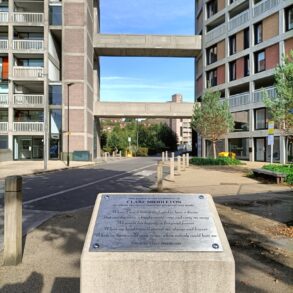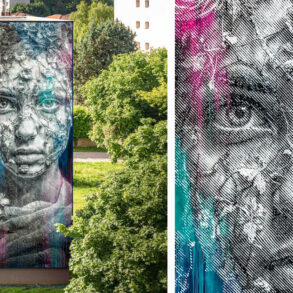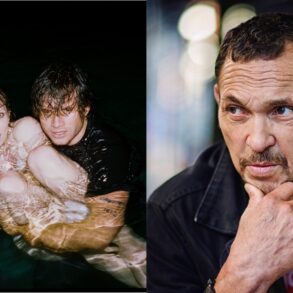As the story goes, Vassilios Georgiadis was standing outside his asbestos and lead abatement warehouse in Red Hook one October evening in 2013 when Banksy drove by.
“He was smoking a cigarette, in his thoughts,” Georgiadis’s son Anastasios told Hyperallergic of the encounter, when he noticed that a van had pulled over on the busy corner of King Street and Van Brunt. Neighborhood locals don’t park there, Anastasios said.
Vassilios had never heard of Banksy, according to his son, but warned the man in the vehicle that if he left his van at the corner, it could be clipped by a tractor-trailer turning the wide corner. He then offered the man, now believed to have been the elusive street artist whose identity is unknown, a spot in the Georgiadis warehouse driveway.
“All I need is a couple of minutes to go to the store,” the man told Vassilios, according to his son. Later that night, the family believes Banksy came back and tagged the warehouse with a massive work entitled “Battle to Survive a Broken Heart.” The red heart-shaped Mylar balloon, a signature Banksy motif, is symbolically covered in band-aid sketches and hangs by a short black string. Anastasios said his phone blew up with calls from media outlets and a crowd gathered in front of the warehouse.
“It was just a mess on that corner,” Anastasios recalled.
The Georgiadis family extracted the six-by-nine-foot, 7,500-pound slab of wall that included Banksy’s work and placed it in storage in 2014. Now, for the first time in over a decade, the public can view the work at Manhattan’s Brookfield Place among the mall’s luxury retailers in anticipation of its live Guernsey’s auction at the venue on May 21.
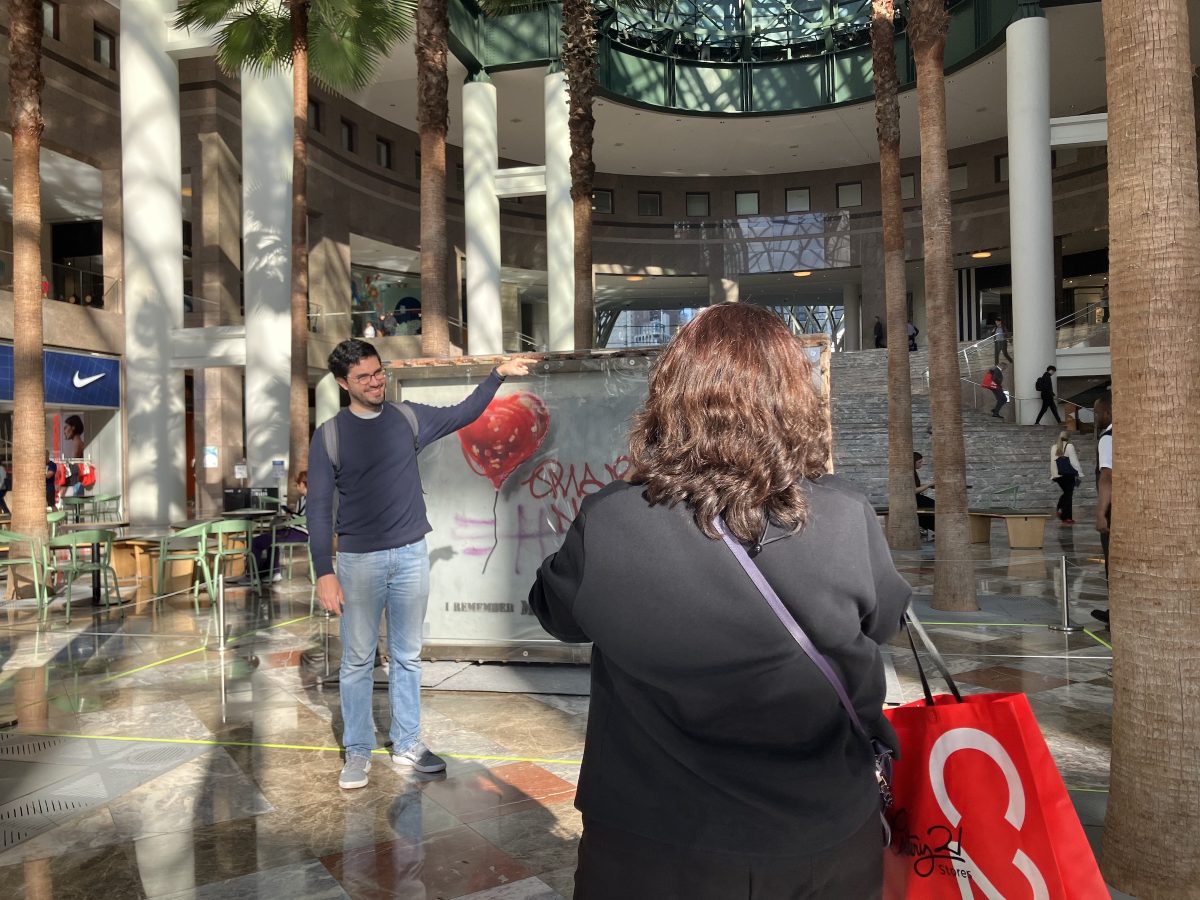
The day after the work cropped up at the warehouse in 2013, a graffiti artist by the name of OMAR NYC spray-painted his own name next to the heart-shaped wall art and defaced it. But Banksy came back, possibly marking the first time the artist ever returned to alter a completed work. He made additions, according to the family, including the words “is a jealous little girl” next to Omar NYC’s tag.
Hyperallergic has attempted to contact Banksy through the Pest Control Office, which handles the mysterious artist’s press inquiries, for comment.
In the years since the work was put in an art storage unit at an undisclosed location, the Georgiadis-owned warehouse was sold and demolished. And four years ago, Vassilios died from a heart attack.
“The fact that Banksy created this heart-shaped balloon, complete with bandages, was almost a vision of, unfortunately, what was to come,” Arlan Ettinger, who will conduct the auction for Guernsey’s, told Hyperallergic in a joint interview with Anastasios.
Anastasios said Georgiadis family is selling the Banksy wall now because his mother is ready to part ways with what he calls “the last thing left of [Vassilios]” in their possession. A portion of the proceeds from the sale will go to the American Heart Association. If the wall sells for under $1 million, the family will donate 10% of the proceeds, and if it sells for over $1 million, they will give 40% of the sale.
“Being that he always gave to the community, we wanted to give something back ourselves,” Anastasios said.
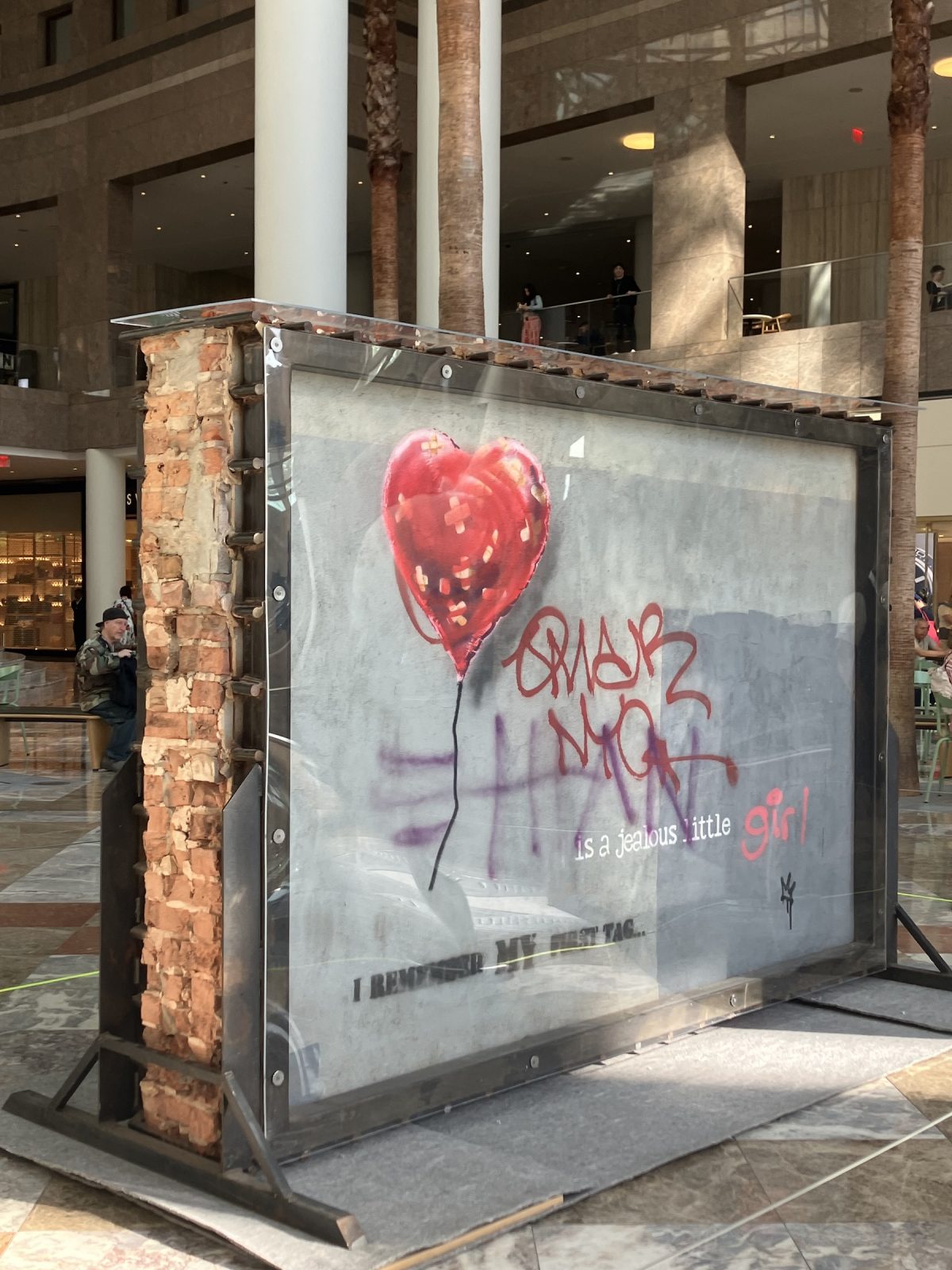
Ettinger, who is the president of Guernsey’s, pointed to recent multi-million Banksy sales when Hyperallergic asked how much the work is expected to sell for.
While Ettinger doesn’t think it’s likely the wall mural will sell for as much as the $25.4 million painting “Love is a Bin,” which broke the artist’s records in a 2021 Sotheby’s sale, he speculates the work’s dimensions will influence the price.
“Our research indicates this is the largest Banksy, by far, ever sold,” Ettinger said. “And in the art world, size does count.”
At Brookfield Place’s Winter Garden on Wednesday afternoon, April 30, the plexiglass covering the wall reflected the incoming sunlight such that Banksy’s graffiti was barely visible. Still, a few passersby noticed a big red sign with the famous artist’s name.
Cary and Elisa Speigel saw the rectangular wall while strolling through Brookfield Place.
“I said, ‘What’s so special that they had it cut out the entire section of wall?’” Cary, an architect, told Hyperallergic. The New York City locals marveled at the steel frame holding the brick wall upright.
A security guard pacing around the work said that some visitors had gone past the protective rope to take photos with it.
One woman who asked to be identified as Peggy told Hyperallergic that the work evoked something more personal. She is a Banksy fan, she said, and she’s seen his work in museums. She added that she was formerly a sex worker and the bandaged-heart design reminded her of how she has supported herself through difficult times.
“He’s trying to say something — he’s not just doing art for nonsense,” Peggy said.
This post was originally published on this site be sure to check out more of their content.




